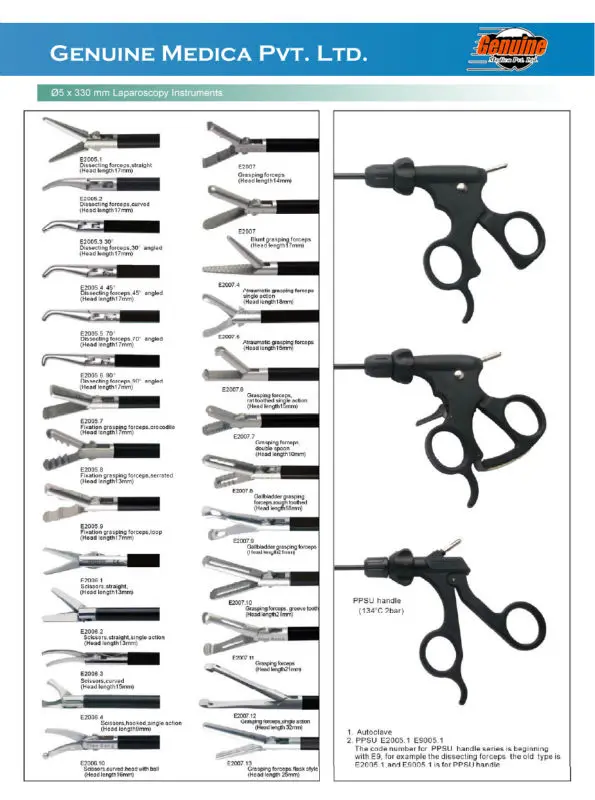
The cookie is used to store the user consent for the cookies in the category "Other. This cookie is set by GDPR Cookie Consent plugin. The cookies is used to store the user consent for the cookies in the category "Necessary". The cookie is set by GDPR cookie consent to record the user consent for the cookies in the category "Functional". The cookie is used to store the user consent for the cookies in the category "Analytics". These cookies ensure basic functionalities and security features of the website, anonymously. They may also be placed in the sewing category.Necessary cookies are absolutely essential for the website to function properly.

Single tooth forceps are also called "rat tooth forceps." Forceps may either have many teeth or a single tooth. Thumb forceps are used to grasp tough tissue (fascia, breast).DeBakey forceps are used to grasp delicate tissue, particularly in cardiovascular surgery.Short smooth pick-ups are used to grasp delicate tissue. Long smooth pick-ups are called dressing forceps.Adson pick ups are either smooth: used to grasp delicate tissue or with teeth: used to grasp the skin.Russian tissue forceps are used to grasp tissue.Pick ups, thumb forceps and tissue forceps are available in various lengths, with or without teeth, and smooth or serrated jaws.A Backhaus towel clip is used to hold towels and drapes in place.Other names: sponge forcep.ĮX: Sponge sticks holding a 4 X 4 and probang. A Foerster sponge stick is used to grasp sponges.A Kocher is used to grasp heavy tissue.A Babcock is used to grasp delicate tissue (intestine, fallopian tube, ovary).A "Judd-Allis" holds intestinal tissue a "heavy allis" holds breast tissue. are used to hold tissue, drapes or sponges.A hemoclip applier with hemoclips applies metal clips onto blood vessels and ducts which will remain occluded.A right angle with a suture attached is called a "tie on a passer." Other names: Mixter. A right angle is used to clamp hard-to-reach vessels and to place sutures behind or around a vessel.Other names: Schnidt tonsil forcep, Adson forcep. Burlishers with an open finger ring are called tonsil hemostats. A burlisher is used to clamp deep blood vessels.Kelly, hemostat, mosquito (left to right) A Kelly is used to clamp larger vessels and tissue.A mosquito is used to clamp small blood vessels.A hemostat is used to clamp blood vessels or tag sutures.are used to compress blood vessels or hollow organs for hemostasis or to prevent spillage of contents.Metzenbaum scissors - Used to cut delicate tissue.Curved Mayo scissors - Used to cut heavy tissue (fascia, muscle, uterus, breast).Also known as: Suture scissors.ĮX: Straight Mayo scissors being used to cut suture. Straight Mayo scissors - Used to cut suture and supplies.4 handle with 20 blade (skin knife) - Used to cut skin.


are sharp and are used to cut body tissue or surgical supplies.A Balfour with bladder blade (self-retaining) is used to retract wound edges during deep abdominal procedures.A Gelpi retractor (self-retaining) is used to retract shallow incisions.A Weitlaner retractor (self-retaining) is used to retract shallow incisions.A malleable or ribbon retractor (manual) is used to retract deep wounds.A goulet (manual) is used to retract shallow or superficial incisions.An Army-Navy retractor (manual) is used to retract shallow or superficial incisions.A Richardson retractor (manual) is used to retract deep abdominal or chest incisions.A Deaver retractor (manual) is used to retract deep abdominal or chest incisions.When identifying retractors, look at the blade, not the handle. They are either "selfretaining" (stay open on their own) or "manual" (held by hand). used to hold back or retract organs or tissue to gain exposure to the operative site.Each instrument can be placed into one of the four following basic categories: – Retracting and Occluding Instruments – Cutting and Dissecting Instruments – Clamping and Occluding Instruments – Grasping and Holding Instruments Basic laparotomy instruments are essential to accomplish most types of general surgery.BASIC SURGICAL INSTRUMENTS Fundamentals of Primary Health Care B


 0 kommentar(er)
0 kommentar(er)
